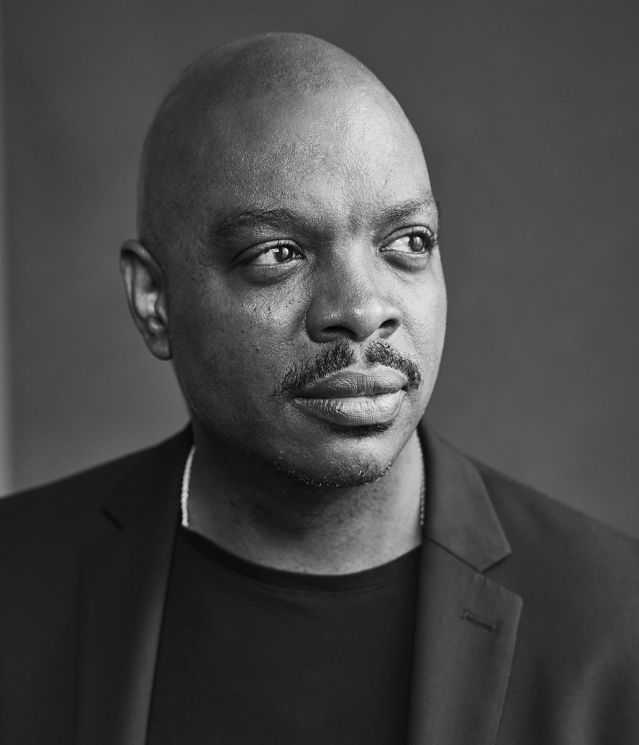The Therapists Who Take It Personally
"If there's not a friendly face in your life, it’s my job to make you feel safe.”
By Psychology Today Contributors published September 5, 2023 - last reviewed on September 21, 2023
The Intimate Connection of Therapist and Client
By Jonathan Shedler, Ph.D.
It is impossible for two people to meet and discuss the most private details of one of their lives, week after week, without stirring up strong feelings—in both people. When psychotherapy is ongoing and real, it touches the full spectrum of emotional life of each participant: care and concern, affection, attraction, repulsion, joy, sorrow, anger, indifference, competitiveness, resentment, spite, envy. Everything.
Powerful feelings necessarily arise in intimate human relationships and meaningful psychotherapy is an intimate relationship. In some ways, it is like other intimate relationships, bringing out the best and the worst in us. But in other ways, it’s like no other relationship we’ll ever experience.
If psychotherapy is meaningful, it ultimately changes both people. Sigmund Freud was the first modern psychotherapist and the first to understand this. He wrote in 1905, “No one who, like me, conjures up the most evil of those half-tamed demons that inhabit the human beast, and seeks to wrestle with them, can expect to come through the struggle unscathed.” As it was then, so it has been for every generation of psychotherapists since.
Contrary to popular belief, psychotherapists are not trained to somehow turn off their feelings toward their patients. Even if that were possible, it would make us less than fully human. What psychotherapists do, rather, is cultivate the ability to fully feel our feelings without acting on them, and without burdening our patient with them. To use a bit of therapy jargon, we “contain” those feelings. This means allowing ourselves to feel them without letting them hijack our attention or start running the show. Skilled psychotherapists also learn to use the feelings that arise in the psychotherapy relationship in a disciplined way, as a potential source of information about patients and how to help them. We understand that the feelings patients evoke in us often contain crucial information the patient cannot (yet) put into words.
For example, therapists treating narcissistically self-absorbed patients often feel a sense of being invisible, as if their presence is superfluous. Beginners might try to tune that feeling out or find themselves withdrawing emotionally. A skilled clinician, however, will note that unpleasant feeling and get curious about what’s happening in the therapy relationship that’s eliciting it. They might realize the patient has been consistently ignoring their comments, carrying on as if they hadn’t spoken. They might remember the patient came to treatment because their intimate relationships never last. And they might connect some dots: Perhaps the patient’s relationships go sour because they make others feel invisible too. At the right time, they might bring up the topic: “I’m noticing there’s not much room for me to participate in this discussion. I wonder if you’ve been aware of that too.”
It takes years to learn to work this way and the learning never ends. It’s work for a lifetime. It begins with in-depth psychotherapy for the psychotherapist, to become comfortable with the darker corners of our own minds. We learn to understand and accept difficult feelings most people habitually shut out. The purpose of personal psychotherapy for therapists—one purpose, anyway—is to become comfortable and familiar navigating the terrain of emotional life.
Finally, to safely work with powerful emotional forces—those half-tamed demons—certain conditions are necessary. These constitute the therapy “frame,” which, like a picture frame, delineates the action of therapy from life outside of sessions. Some have likened the frame to highway guardrails that prevent us from driving over a cliff.
A therapist who knows how to maintain the therapy frame will have a therapist-patient relationship with you—and only a therapist-patient relationship. They will not see you socially or become your friend, lover, or business partner. They will set up a regular appointment schedule, so you know exactly when you will see each other. They will start and end sessions on time. They will do psychotherapy during sessions and at no other time or place. They will exercise great care about disclosing their own feelings or discussing their own lives, never forgetting that your therapy sessions are for your emotional benefit, not theirs. They will generally avoid physical contact, making it clear that in psychotherapy, feelings are expressed in words, not action.
The boundaries of the therapy frame may feel cold or arbitrary at first, but they reflect the hard-won wisdom of generations of therapists who learned the hard way that they are necessary for doing deep emotional work. The paradox is that the frame provides the safety and security needed for both people to fully engage in the process, and for the patient to relax into the therapy and truly open up.
The more secure the boundaries, the more freedom there is within them. For example, it’s safe to delve into fantasies only when you are sure they will stay in the realm of fantasy and not be acted on. It’s safe to let your guard down and explore painful thoughts and feelings when you know the session has a clear beginning and end. When you know that, no matter what, you can count on the therapist to be there at the next appointment, exactly as planned, then you can allow yourself to fully experience your fear of abandonment, or express your rage. You can discuss your fantasies of kissing your therapist or punching them, or of being kissed or punched by them, only when you know there won’t be any actual kisses or punches.
Psychotherapy, done well, is not an intellectual experience; it’s a powerful emotional experience. And in the right professional hands, it can change your life.
Jonathan Shedler, Ph.D., is a clinical professor of psychiatry at the University of California, San Francisco, as well as an author, consultant, and speaker.

Ann Woo-Ming Park, M.D.
“I met Mr. and Mrs. Williams* shortly after my residency,” says Ann Woo-Ming Park, a psychiatrist in Southern California. “He was in his early 80s and had been diagnosed with pancreatic cancer. His gastroenterologist asked me to see him for depression. When I met the Williamses, I fell in love almost immediately. They also reminded me so much of elders in the Asian community. We started supportive couples therapy to work through the stress of the diagnosis, as well as medications to treat his cancer-associated depression. His mood responded well, but his cancer marched on. After a few months, it became harder for him to get to our appointments, but I told the family I would make house calls. I was oblivious to the fact that the hospital would likely not have allowed it—and I’m glad I didn’t know. It was a privilege to meet them where they lived. When Mr. Williams passed away, the family asked me to speak at his funeral. Looking back, I’m grateful that, in addition to being doctor and patients, we connected as fellow human beings.” [* Patients’ names have been changed.]
You’re More Than Just My Noon Appointment
By Rick Miller, LICSW
People spend a lot of time and money on therapy, and they often feel close to their therapists. But many clients assume that the relationship is one-way, and that they’re really no more than just the 12 p.m. slot on their clinician’s schedule.
I am here to tell you how far that is from the truth.
This past year, two of my clients died, and not only did their deaths affect me profoundly, but they also brought the whole therapeutic relationship into question. I felt inside my body a depth of grief I usually associate with the loss of family members or close friends. And yet it’s what I felt.
One Monday, I was seeing someone via video link. He had to step away for a few moments, so I checked my email and was shocked to learn that another client had, only hours prior, ended his own life. I zipped up all my thoughts and feelings to get through the rest of the session I had begun and then sat alone and in shock.
That client had taken his life after significant struggles with depression and anxiety. I had been present with him in therapy, rooting for him, but his problems didn’t improve as much as he needed. I shared the situation with my husband and some clinicians who regularly guide me, but the pain remained, and I felt alone inside it. Normally, in circumstances like this, people come together and grieve jointly, but I had no role to play in the public grief for this man’s life. I was neither friend nor family.
Recently, I found myself uncharacteristically worried about another client after he had no-showed. People no-show all the time; generally, they figure things out and contact me. But this felt different. I emailed him and when he didn’t respond, followed up with a text. My sense of disquiet increased.
Finally, I called the police to request a wellness check, and as I waited for them to get back to me, I felt as I would have if a family member had been in emergency surgery, and I knew they might not come out. Then the call came: My client was found in his home, expired. I was shocked and saddened. It meant straddling the lines of confidentiality, but I did what I knew my client would have wanted and contacted his family. They were grateful, but as a therapist, I was outside the community of his loved ones and had no further place in their collective grief. Dealing with such a tragedy alone is an immense, heartbreaking challenge.
My advice to other therapists facing this situation: Take your time. Give yourself space to reflect on what your client meant to you over the time you worked with them. Appreciate that perhaps you were one of the most important persons in their network, and—this part is more controversial—allow yourself to love them. We often think that loving our clients indicates a lack of boundaries, but the truth is that we do love them.
And clients, if you think you’re “just” your therapist’s 12 p.m. appointment, know that that isn’t true. Your therapist cares deeply about you, your well-being, and your happiness. It’s not an equal relationship, and that comes with a cost. You come to a therapist to benefit from their skills and perspective—and you pay them for their time. But this relationship, however uneven, is as real, vibrant, and meaningful for us as it is for you. We care—probably far more than you realize.
Rick Miller, LISW, is a clinical social worker in Massachusetts and the author of Unwrapped: Integrative Therapy with Gay Men…the Gift of Presence.

Jewel Woods, MSW
“I’m a first-generation college student raised by my grandmother,” says Jewel Woods, a therapist with practices in Columbus and Toledo, Ohio, “and in our community, a disproportionate number of youth are being raised by their grandparents.” During the pandemic, a woman brought her grandson, who was having behavioral problems, to Woods. “Not only did the therapeutic bond happen with him,” he says, “but also with his grandmother. She even asked me if I would consider adopting him because her greatest fear was that she would leave this earth and that boy would have no one else in his life to keep him on the right path. But I couldn’t do that; this is about me being a therapist, not adopting children.” In fact, the grandmother did pass away during the pandemic, and the boy was moved out of state. “That really broke my heart. She wanted him to stay connected to me as a positive Black male who could provide guidance,” he says. “There are so few male African-American clinicians, but we have tremendous opportunities to do good.”
The Patient Who Made Me Question Everything
By Emily R. Kline, Ph.D.
In my final year of training to be a psychologist, I was assigned a challenging case at a clinic for young people experiencing psychosis. Jack was on a mental health leave from college. He wouldn’t eat, bathe, or see his friends. His parents suspected that paranoid delusions consumed his mind.
Jack came to see me twice. He seemed hesitant, but I thought we were making slow progress at getting to know each other and building trust. Then he missed a session. The next week, he no-showed again; this time, his dad surprised me by coming in Jack’s place. “He won’t come,” the father said. “He doesn’t want to talk to you. I just wanted to say thank you for trying.”
Years of classes and supervised practice had prepared me to work with Jack and help him understand his emotions, thoughts, and behaviors. But he did not want to talk to me. Jack’s father knew that his son needed to meet with a therapist. He had spent months waiting for a spot to open at the clinic. But he couldn’t force his son to come.
Psychologists know a lot about how to talk to people who are struggling with ambivalence about their behaviors. Decades of research have shown that when we use a practice called motivational interviewing, people are much more open to making positive changes. But in that moment, I couldn’t use my skills because I didn’t have access to the person at the center of everyone’s concern. I had access only to his father. But then an idea took root: Jack’s dad might be able to use motivational interviewing to talk to Jack about attending therapy.
Even under the best circumstances, a therapist only sees a young patient for 50 minutes once a week. The other six days and 23 hours, they’re primarily with friends or family members, often parents, who do the heavy lifting of encouraging their loved one to engage in the activities that make recovery possible. I felt helpless because I couldn’t talk to Jack, yet his dad was with him all the time.
Since that fateful session eight years ago, I created a brief coaching program so parents and others could learn to use motivational interviewing with the young person in their life. I enrolled 130 families in studies to test the effects and found that they were grateful to learn these skills and able to use them right away. Families that got the training experienced significantly reduced conflict and burnout.
Believe me: I want your kids to hear and accept your advice, but there are no magic words to get them to listen. Influence flows from relationship, which flows from respect. For kids to listen to you about stressful topics, you must convey curiosity about the person they’re becoming, interest in their perspective, confidence in their judgment, and respect for their autonomy. That can be done through reflective listening, asking questions, and offering advice thoughtfully and sparingly.
If a teen says, “I hate school,” our instinct is to rush in with reassurance (“But you are so good at math!”) or solutions (“Let’s meet with the principal and discuss dropping a course”). But we can be much more effective by reflecting on what we hear (“School has been tough for you lately”) or eliciting more information (“What makes you say that?”).
The better we understand our teens, the more helpful our advice will be. Sometimes, they don’t even need advice or intervention; a calm, nonjudgmental sounding board is enough for them to feel better or problem-solve on their own.
Emily R. Kline, Ph.D., is a clinical psychologist and writer in Boston.

Lindsay Weisner, Psy.D.
Several years ago, a newly engaged woman started seeing Lindsay Weisner, a psychologist on Long Island, New York. Friends had warned her that her fiancé was flirting with other women, and while she went on to marry him, by their first anniversary, his behavior became hurtful and erratic. “At one session, she told me a story about him that just seemed off,” Weisner says. “I think it is our job to show patients what they can’t see. I couldn’t bear the thought that she was going to be in pain for many more years, so I casually asked how their finances were doing—although what I meant was, ‘Check the credit card bills!’” The woman indeed found payments signaling an affair. Still a client, she is happily remarried. “I tell patients my cell phone is open to texts 24 hours a day,” says Weisner, who has also worked with teens experiencing suicidal ideation. “If someone is having an intrusive thought, they can text it to me, and I can hold onto it or follow up. If someone doesn’t have a friendly face in their life, it’s my job to make them feel safe.”
Submit your response to this story to letters@psychologytoday.com.
Pick up a copy of Psychology Today on newsstands now or subscribe to read the rest of this issue.
Facebook image: YAKOBCHUK VIACHESLAV/Shutterstock
